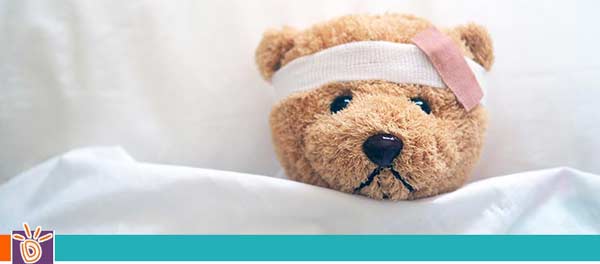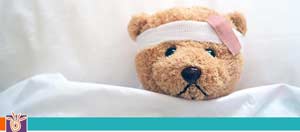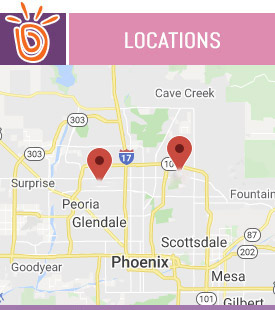Pediatric Injuries and Wound Care Specialist in Scottsdale, and Glendale AZ
Pediatric injuries require specialized expertise to ensure children’s bone and joints grow and develop normally after an injury. If your child needs wound care, come to KidsHealth Pediatrics. For more information, contact us today or book an appointment online. We have pediatric clinics in Scottsdale AZ and Glendale AZ.


Table of Contents:
What are the rules of wound care?
What factors inhibit the healing of injuries or wounds?
What are the signs of injuries or wounds healing?
When should my child see a doctor for injuries or wounds?
It can be unsettling for both parents and their child if their child experiences an injury or wound. While the child experiences the shock and discomfort from the wound or injury, the parents worry about their child’s well-being and wonder how to care for them best. If this happens to your child, our pediatric injury and wound care specialists at KidsHealth Pediatrics are here to provide exceptional care for your child.
There are five basic rules or principles for wound care and management, which are as follows:
• Hemostasis: in simpler terms, hemostasis is merely stopping the flow of blood from a wound. Hemostasis is typically achieved by placing pressure on the wound.
• Cleaning the wound: once the flow of blood has been stopped, the nurse or doctor disinfects it with antiseptic, removes any debris from the wound, washes it with saline, and provides antibiotics if the wound is at risk of infection.
• Numbing the wound: an analgesic is used to numb the wound to allow for painless and streamlined closure of the wound. The numbing usually occurs with an injection of local anesthesia around the wound.
• Skin closure: the edges of the wound are brought together so it can heal properly. Skin closure can be accomplished through adhesive strips, sutures (stitches), or staples for severe scalp wounds.
• Dressing and follow-up guidance: the nurse or doctor will cover the wound with dressing and a bandage to prevent contamination, infection, or re-opening. Once it is sufficiently protected, they will offer the patient advice on caring for the wound, what to avoid, and when to come and see them for suture removal. They will also advise you to see them if you experience any concerns with the wound between that time.
Some factors that could inhibit the healing of injuries or wounds include:
• Chronic medical conditions like diabetes, obesity, or immunodeficiency conditions
• Dry skin
• Infection in the wound or injury
• Poor blood supply to the injury
• Unhealthy diet, as wounds and injuries require a steady flow of nutrients to heal properly
• Use of anti-inflammatory medication like aspirin or ibuprofen
The good news for young children is that they have youth on their side, which powerfully influences wound and injury healing! At the same time, it is important to take proper care of a child’s wound to avoid infection or other healing complications. Therefore, ensure the wound or injury stays clean, is given plenty of rest, and your child maintains a healthy diet as the wound or injury heals.
Healing occurs over a few different stages. Moreover, the signs that an injury is healing may be different from that of a wound. With that in mind, the general healing stages of an injury and the accompanying signs are as follows:
• Inflammatory stage: inflammation in the injured area protects the injury from movement, kills bacteria to prevent infection, cleans tissue debris, and initiates the healing process by letting more blood pool in the injured area. Some signs of the inflammatory stage include pain, swelling, warmth, redness, muscle spasms, and reduced range of motion.
• Repair stage: in the repair stage, your body begins to develop new tissues in the affected area to replace the damaged ones, causing scar formation to occur. Signs of the repair stage include less pain, swelling, redness, warmth, muscle spasms, and improved range of motion, but pain likely still occurs with movement or when pressure is applied to the injury.
• Remodelling stage: the new tissues are molded and properly aligned in the remodeling stage. There are minimal signs of this stage in the healing process, as most individuals will feel back to normal during this stage.
Concerning wounds, healing typically occurs according to the following phases:
• Blood clots: increased platelets in the blood will be produced and sent to the injured area to help the blood clot and stop the bleeding. This stage in the wound healing process happens immediately after a wound occurs.
• Scab formation: once the blood clots and dries, a scab will form to protect the wound from infection. Some signs of this stage in the healing process include slight swelling, red or pink color, tenderness, and possibly clear fluid oozing from the wound.
• Tissue growth and rebuilding: the body creates new tissues to replace the damaged ones, granulation tissue begins to form within the wound, and new skin forms over the granulation tissue. Some signs that the wound has reached this stage in the healing process include shrinking in size, edges pulling inward, and increased itchiness.
• Scar formation and wound strengthening: after the scab falls off, the area will appear shiny, stretched, and red as a scar forms. The scar is weaker and less flexible than the surrounding skin. Over time, the scar will fade, and the skin will become stronger around the wound.
If your child has experienced a wound or injury, they should see a doctor if you notice or experience any of the following:
• Symptoms do not improve after rest and at-home care
• Inability to stand, walk, or move the affected joint
• Difficulty stopping a wound from bleeding
• Pain that disrupts sleep or routine activities
• Visible deformities in the injured area
• Cut that is more than a quarter of an inch deep or continues to bleed after 15 minutes of gentle pressure
• Signs of infection, including pus, red streaks running away from the wound, or a fever
Our pediatric injuries and wound care specialists at KidsHealth Pediatrics can provide your child with caring and high-quality medical care for any injury or wound they experience. For more information, please call us or schedule an appointment. We have clinics located in Glendale and Scottsdale, Arizona, to serve you well! We serve patients from Glendale AZ, Scottsdale AZ, Tempe AZ, Mesa AZ, Paradise Valley AZ, and Phoenix AZ.

Additional Services You May Need

Additional Services You May Need








